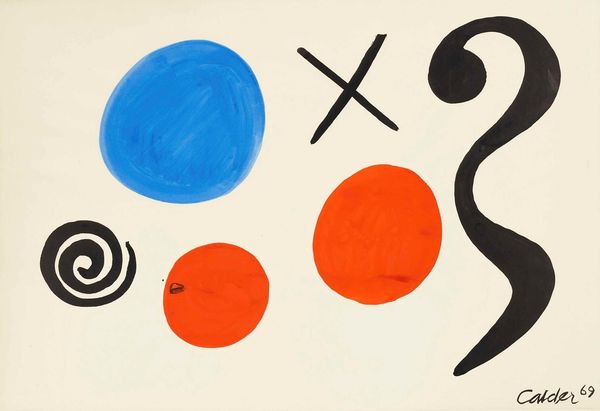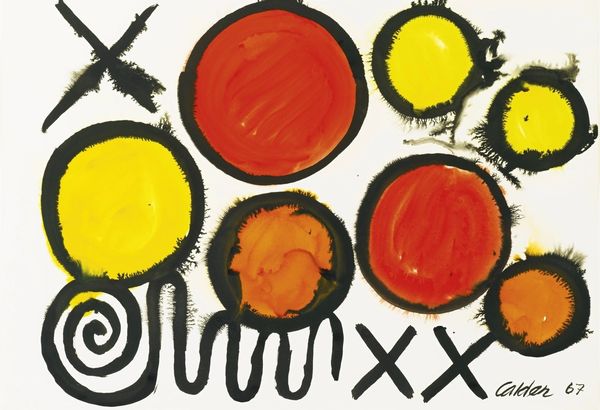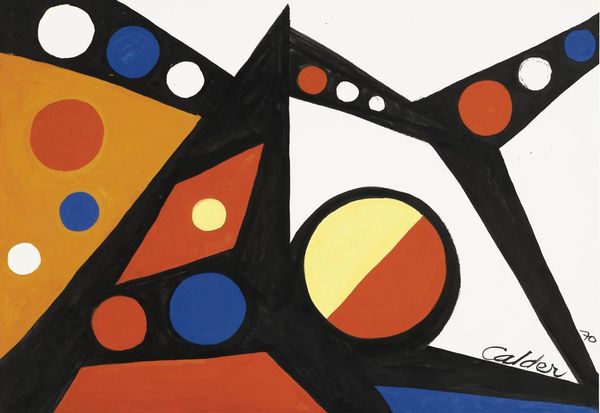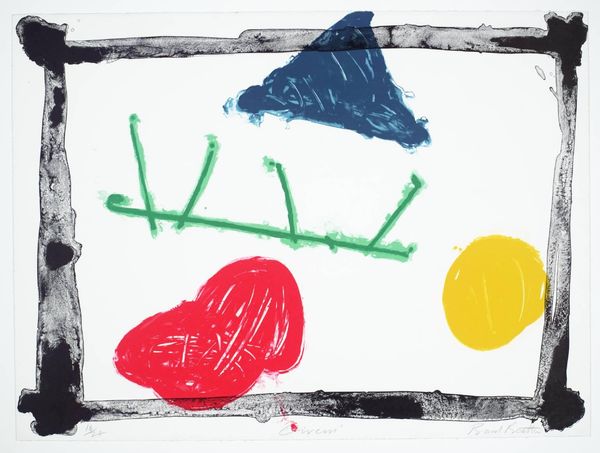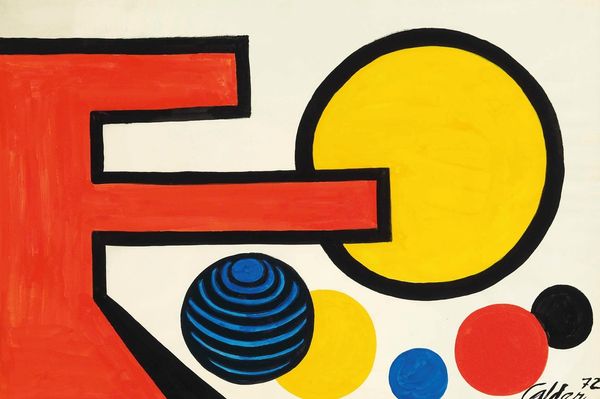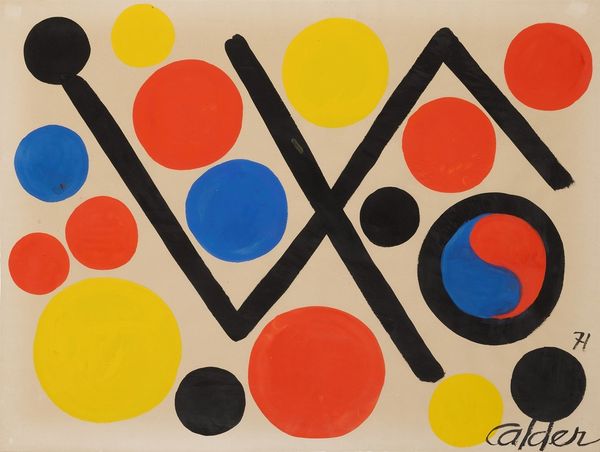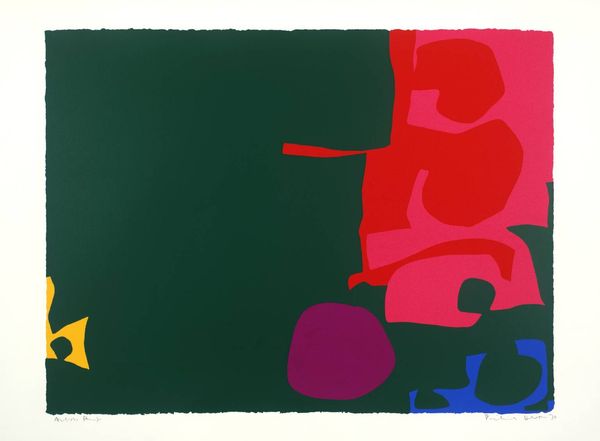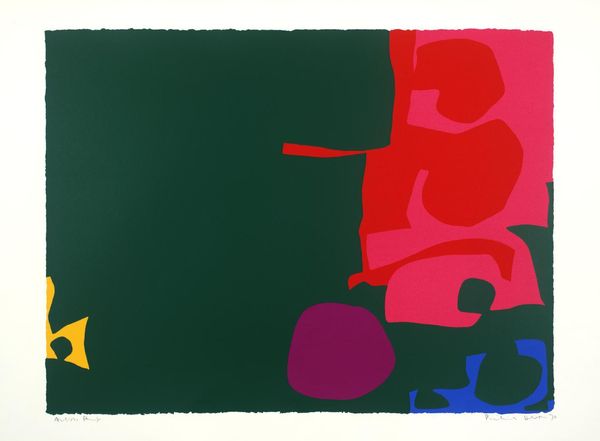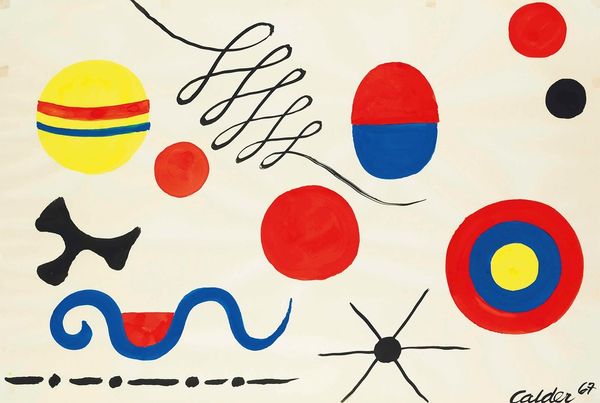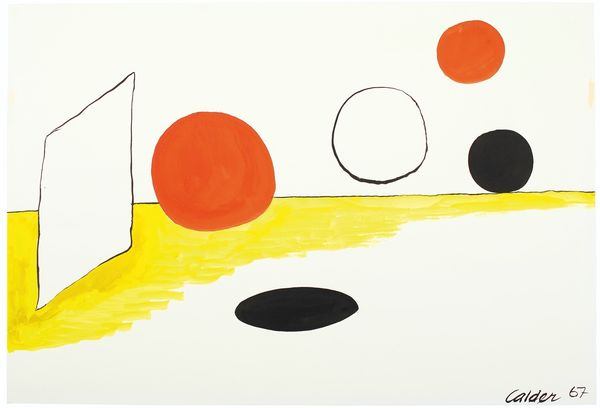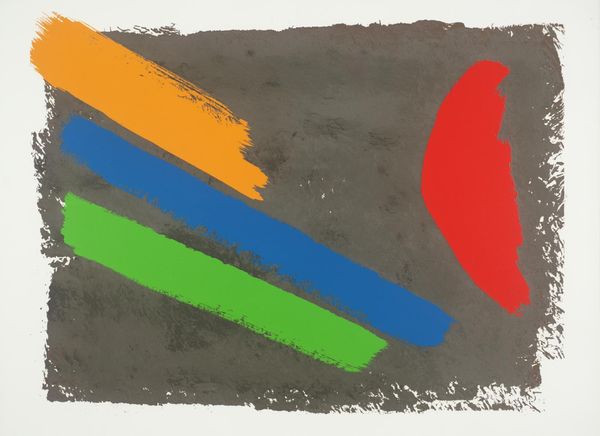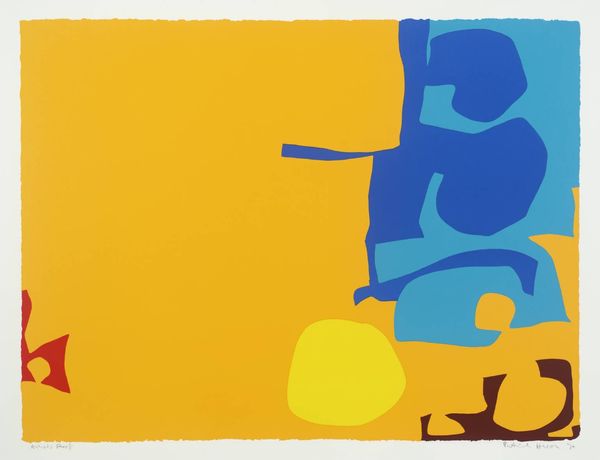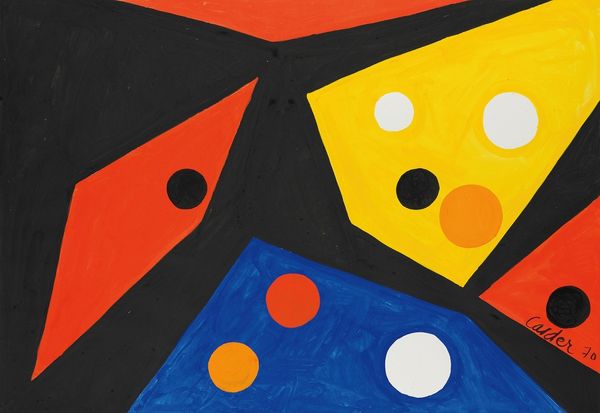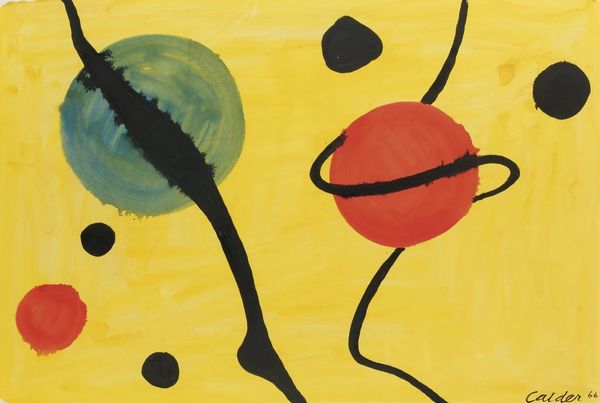
painting, acrylic-paint
#
painting
#
acrylic-paint
#
abstract
#
acrylic on canvas
#
geometric
#
geometric-abstraction
#
modernism
Copyright: Modern Artists: Artvee
Editor: This is Alexander Calder's "Black Cross on Yellow" from 1963, done in acrylic on canvas. It’s so bright and playful, almost childlike. But something about that stark black cross gives it a feeling of tension. What do you see in this piece, especially given its historical context? Curator: That "childlike" quality you perceive is crucial. Calder was working in a period where abstract expressionism dominated, often marked by angst and existential questioning. Here, Calder disrupts that narrative. But the cross is indeed disruptive; does it offer critique to something larger? Editor: Critique of what, exactly? The Abstract Expressionist movement? Curator: Perhaps. But more broadly, consider the period: 1963. The Civil Rights Movement is gaining momentum. How might we interpret the "black cross" against the "yellow" backdrop in the context of racial tensions and the struggle for equality? It disrupts the potentially placid reading of the overall artwork. Does it embody solidarity, resistance, a break in status-quo? Editor: So you're suggesting the artwork is about social commentary of race in the sixties and is speaking beyond just simple abstraction? It feels like an unusual read for Calder. Curator: I'm not suggesting a singular meaning. It's about opening up the artwork to intersectional readings, about considering the historical and political forces that shaped Calder's world, whether consciously or subconsciously. The beauty of abstraction is its ambiguity, but that ambiguity can still hold power, prompt dialogue. What do you make of that blue circle, placed next to that heavy mark? Editor: I didn't even consider this had social commentary or anything deeper than just geometric shapes, but it provides so much more to think about... thanks! Curator: Exactly. Now we can consider visual language as cultural reflections that can push society forward.
Comments
No comments
Be the first to comment and join the conversation on the ultimate creative platform.
